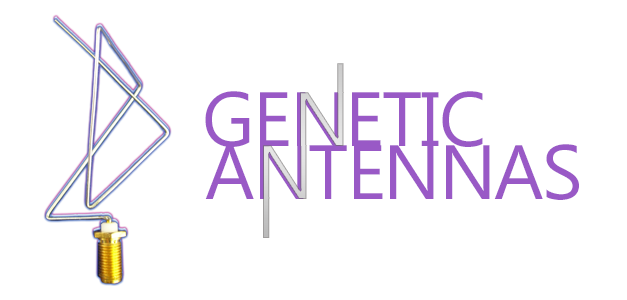
First appearing in the 1990s, genetic antennas, also known as “evolved antennas,” resemble intricately bent paperclips attached to a radio frequency connector. They are designed entirely by an optimization algorithm, which can be a genetic algorithm or some other iterative method, having no input to their theory of operation by a human engineer.
Genetic antennas go through “Evolutions.”
Similar to manually designed custom antennas, it often takes multiple attempts and iterations to come up with the most optimal genetic antenna design for the specified application. However, genetic antennas are not existing designs modified by optimization. Rather, each iteration, designed entirely by a computer, is a new antenna altogether.
To design a genetic antenna, the computer program starts with rather simple shape. Using its own calculations and algorithms, the program modifies the shape, either by adding or reshaping elements. These new characteristics will have different effects on the antenna’s performance. After the said modifications, a new shape, thus, a new antenna, is formed. These new shapes are essentially different “evolutions” of the original antenna.
After a good number of second-generation antennas are developed, each one is evaluated to determine how well they fulfill the design requirements; they are assigned a numerical score accordingly. The antennas with the worst performance scores are then discarded. This process of eliminating the poorest performing candidates and keeping the best performing candidates, mirrors Charles Darwin’s concept of “natural selection.” The computer then repeats the procedure of modifying elements, this time, using the best performing candidates from the second generation.
Essentially, the computer program develops multiple generation of antennas until it finds the best performing antenna. The resulting shapes are often very complicated and difficult to conceptualize by human engineers.
Latest Posts

How Do Seasonal Changes Affect Antenna Performance?
Winter is officially in season! With its onset comes harsher weather conditions and colder temperatures. In this post, we explore how the changing seasons affect antenna performance.

The Role of Antennas in ISR
ISR stands for “intelligence, surveillance and reconnaissance.”
Intelligence is a broad term that refers to information gathering. Surveillance refers to closely observing a target itself, while reconnaissance mostly refers to a preliminary survey of an area to gain information.
